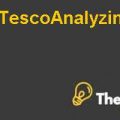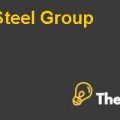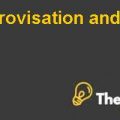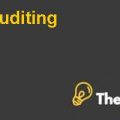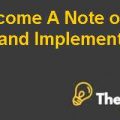H. J. HEINZ Case Solution
Introduction
For the purpose of analyzing the investment in the North American Consumer Products division; the Weighted Average Cost of Capital (WACC) is considered to be a very critical aspect in the recent financial crises of the year 2008 to 2010, which made every industry suffereconomically. (Lipson, 2010). So, to assess the cash flows’ projections; one of the controversial issues for Heinz wasits weighted average cost of capital (WACC), which was due to 3 reasons that are as follows:
- Financial melt-down in the market.
- Low interest rates in the market.
- Heinz was experiencing a high fluctuation in its share prices over the last three years.
Cost of Debt
Cost of debt is composed of two types of debt i.e. long-term debt and short-term debt as mentioned in the balance sheet of the company. Cost of debt is derived using the bond valuation formula, as two different maturity bonds are mentioned in the company’s balance sheet.
Table 1
| Bond Valuation | |||
| Semiannual bond maturing in 2012 | |||
| Book value of Bond | = | 43,853 | |
| Face value | = | 100 | |
| Coupon Rate (annual) | = | 6.625% | |
| Coupons per Year | = | 2 | |
| Coupon Payment | = | 3.3125 | |
| Years to Maturity | = | 2 | |
| Current Price of Bond | = | 113.7 | |
| Yield to Maturity | = | -0.207% | |
| Semiannual bond maturing in 2032 | |||
| Book value of Bond | = | 4,559,152 | |
| Face value | = | 100 | |
| Coupon Rate (annual) | = | 6.75% | |
| Coupons per Year | = | 2 | |
| Coupon Payment | = | 3.375 | |
| Years to Maturity | = | 22 | |
| Current Price of Bond | = | 116.90 | |
| Yield to Maturity | = | 5.425% | |
| STD | = | 43,853 | |
| LTD | = | 4,559,152 | |
| Weight of STD | = | 0.95% | |
| Weight of LTD | = | 99.05% | |
| Weighted Average Cost of Debt | = | 5.371% |
Beta and Cost of Equity
CAPM (Capital Asset Pricing Model) is used to explain the relationship between the expected stock returns and the systematic risk. (non-diversifiable risk). Through the CAPM, a direct relationship can be achieved between the expected return on the stock and the system’s risk. The beta of the instrument can be obtained using this model, the risk-free interest rate (in this case derived from the interest rate on treasury bills) and the stock exchange risk premium (generated by subtraction) to the risk-free rate of the market risk premium.
The main idea behind the calculation of CAPM is that the investors need two types of compensation. The first is the value of money over time, because as the time passes by; the value of money begins to decline and will become different in the future; second, no business can be exempted from risk. Each type of business risk has its own type of risks, which can be systemic (non-diversification, volatility and market risk) or non-systematic (dispersible and adjustable risk).
The risk-free interest rate is the first part of CAPM, which is compensation for the time value of the investor that is the cost of equity for the business, as investors compensate for the value of their currency. The risk-free interest rate is derived from the government bond yields, such as the US government bonds, because the government bonds are risk-free and because government bankruptcy is low,so it is unlikely to involve any systemic or non-systematic risk.
The second part of CAPM (beta and market risk premium) represents the risks associated with the company. Investors are demanding compensation for the additional risks associated with the business. The business adapts to this type of risk by calculating the beta, which is entirely relatedto thebusiness. Beta refers to the risks associated with the activity that are the same as the risks in the market; if the beta is greater than 1; it indicates that the risks associated with the business are greater than the market risks (the risks are greater than those of other companies in the market or industry), and vice versa. We then multiply the beta by the stock market risk premium to calculate the total risk associated with the business. The equity risk premium consists of deducting the risk-free interest rate from the market risk premium.(Investopedia, 2015).
How We Work?
Just email us your case materials and instructions to order@thecasesolutions.com and confirm your order by making the payment here

